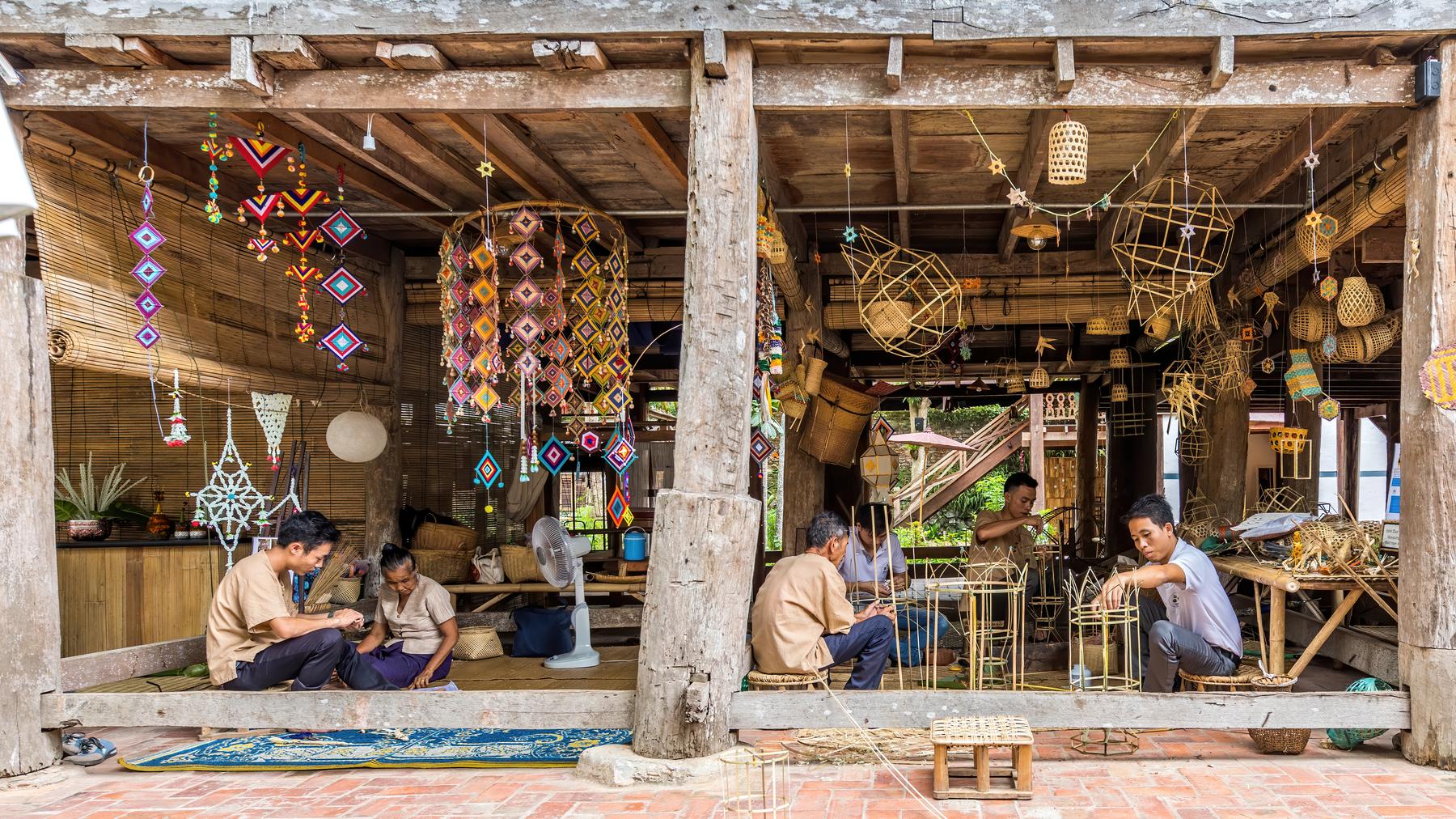When it comes to interior design, the possibilities are endless. From furniture to decor, every element can be tailored to create a unique and inviting space. However, there’s one aspect of interior design that often gets overlooked: textile construction. The way we weave fabrics and construct textiles is evolving rapidly, and it’s changing the game for designers everywhere. In this blog post, we’ll explore how textile construction is shaping the future of interior design, and what you can expect to see as this trend continues to grow. Get ready to be inspired by the incredible innovation happening in the world of textiles!

The Impact of Textile Construction on Modern Interior Design
Textile construction has been a game-changer in the world of modern interior design, bringing unprecedented levels of creativity and innovation to home decor. With new technologies developing at an incredible pace, designers are now able to manipulate textile materials in ways not previously possible.
One major impact of textile construction has been its ability to create unique textures and patterns that add depth and personality to any space. From 3D printing to laser cutting, designers can experiment with various techniques to create intricate designs that truly stand out.
Another benefit is versatility: textiles can be used for walls, floors, furniture upholstery, and more. Additionally, they offer tactile qualities that other materials cannot replicate – think plush cushions or soft rugs.
As it continues gaining popularity among consumers who want sustainable options for their homes, it’s no surprise that manufacturers are starting to embrace eco-friendly production methods as well. As we look towards the future of interior design trends continue evolving around this technique!
Top 5 Innovative Techniques in Textile Construction for Home Decor
Textile construction has paved the way for a new wave of innovative techniques in home decor. One such technique is digital embroidery which allows for intricate patterns and designs to be created on fabrics using computerized machines. Another technique is fabric manipulation, where textiles are molded into sculptural forms through methods like smocking or pleating.
Laser cutting is also gaining popularity, as it allows intricate shapes to be cut out of materials like felt or leather with precision. Weaving techniques have evolved beyond traditional methods, with the introduction of 3D weaving that creates unique textures and structures.
For those looking for sustainable options, natural dyeing processes are becoming more popular as they use environmentally friendly materials like plant extracts instead of harsh synthetic dyes. These textile construction techniques offer endless possibilities for creativity in interior design while also promoting eco-consciousness.
How Textile Construction is Revolutionizing Furniture and Decor
Textile construction is not just limited to fabrics and textiles, it has also revolutionized furniture and decor. Innovative techniques such as 3D knitting, laser cutting, and digital printing have enabled designers to create unique and intricate patterns that were previously impossible to achieve. Furniture pieces can now be made entirely out of fabric, with no need for additional materials such as wood or metal frames. This not only creates a more streamlined look but also reduces waste in the manufacturing process.
One of the most exciting developments in textile construction is the use of smart textiles. These are fabrics that can sense and respond to their environment, such as changing color or shape in response to temperature or light. This technology has enormous potential for creating interactive and dynamic furniture pieces that can adapt to different needs and preferences.
Overall, textile construction has opened up a whole new world of possibilities for furniture and decor design. With its endless potential for innovation and sustainability, it is sure to continue transforming the future of interior design.

A Comprehensive Guide to Understanding the Basics of Textile Construction
Textile construction is the process of creating structures or designs using fabric, yarns, and other materials traditionally used in textile production. This technique involves a combination of weaving, knitting, crocheting, felting and embroidery to create unique textures and patterns for various applications.
The basics of textile construction involve understanding the different techniques used such as weaving which can be done by handloom or power loom. The pattern created depends on how the warp (lengthwise) threads are interlaced with weft (crosswise) threads. Another common technique is knitting where loops are formed from a single thread and woven together to form fabrics like sweaters.
Felting involves matting wool fibers by applying heat moisture pressure whereby fibers interlock over each other forming one uniform piece that does not fray.
Embroidery details uses needlework techniques where motifs or logo designs are stitched onto textiles using different types of threads embellishing fine quality products like bedspreads pillow covers etc making it more appealing for users
Mastery in these basic textile construction techniques allows interior designers to experiment with novel ideas bringing exceptional effects on home decor furniture accessories etc.
Sustainable Practices in Textile Construction: A Pathway towards Eco-Friendly Interiors
Sustainable practices in textile construction are becoming increasingly important as consumers become more aware of the impact of their purchases on the environment. Many textile manufacturers are implementing eco-friendly measures such as using recycled materials, reducing water and energy usage during production, and investing in renewable energy sources.
Natural dyes are also gaining popularity over synthetic options due to their lower environmental impact. Additionally, some companies are incorporating organic cotton or linen into their products to reduce pesticide use.
In addition to these sustainable efforts, there is a growing trend towards creating circular economies within the textile industry. This means that materials are reused or repurposed at the end of their lifecycle instead of being discarded. Some companies have even implemented take-back programs where old textiles can be returned for recycling or upcycling.
These sustainable practices not only benefit the environment but also provide consumers with options to create an eco-friendly home decor that aligns with their values. As demand for sustainability continues to rise, we can expect even more innovative solutions in textile construction moving forward.
Trends in Textile Construction Transforming the Future of Interior Design
Trends in Textile Construction are constantly evolving, and they have the potential to transform the Future of Interior Design. One of the most significant trends is the use of sustainable materials in textile construction. Designers are now exploring eco-friendly options such as bamboo, hemp, and organic cotton to create beautiful and functional textiles.
Another trend is the use of digital printing technology to create intricate patterns and designs on fabrics. This allows for greater customization and flexibility in textile construction. Additionally, there is a growing interest in incorporating recycled materials into textile construction, which not only reduces waste but also adds a unique texture and character to the finished product.
In terms of color trends, bold and vibrant hues are making a comeback in textile construction. Designers are experimenting with bright colors to add energy and personality to interiors. There is also a renewed interest in traditional techniques such as embroidery and quilting, which add depth and texture to fabrics.
Overall, these trends in Textile Construction are shaping the Future of Interior Design by offering more sustainable options, greater customization, and unique textures and colors. As technology continues to advance, we can expect even more exciting developments in this field.
In conclusion, textile construction is a game-changer in the world of interior design. With its innovative techniques and sustainable practices, it has revolutionized the way we decorate our homes and offices. From furniture to decor, textile construction has opened up a whole new world of possibilities for designers and homeowners alike. By understanding the basics of textile construction and staying up-to-date with the latest trends, you can create a space that is not only aesthetically pleasing but also eco-friendly. So why not embrace this exciting new field and transform your living space today? The future of interior design is here, and it’s all thanks to textile construction.
Frequently Asked Questions
What is textile construction?
Textile construction refers to the process of making fabrics and other textile products.
Who uses textile construction techniques?
Textile construction techniques are used by manufacturers of clothing, home goods, and industrial materials.
How are textiles constructed?
Textiles can be constructed through weaving, knitting, crocheting, or felting.
What are the benefits of textile construction?
Textile construction allows for the creation of durable, flexible, and versatile products.
How does textile construction impact the environment?
Textile construction can have environmental impacts through the use of energy, water, and chemicals in production.
What are the alternatives to traditional textile construction?
Alternatives to traditional textile construction include upcycling, natural dyeing, and sustainable materials such as bamboo and hemp.
